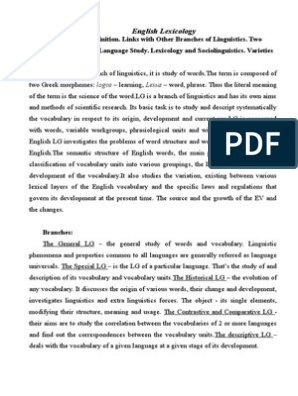0% found this document useful (0 votes)
22 views9 pagesSemantics
This document discusses theories of linguistic meaning, specifically referential semantics. It explains that referential semantics views meaning as reference to objects in the world, but runs into issues explaining meanings that don't refer to anything, like proper names that don't exist or have multiple references. The document evaluates various semantic theories based on how well they explain compositionality and reference in language.
Uploaded by
goblin7708Copyright
© © All Rights Reserved
We take content rights seriously. If you suspect this is your content, claim it here.
Available Formats
Download as PDF, TXT or read online on Scribd
0% found this document useful (0 votes)
22 views9 pagesSemantics
This document discusses theories of linguistic meaning, specifically referential semantics. It explains that referential semantics views meaning as reference to objects in the world, but runs into issues explaining meanings that don't refer to anything, like proper names that don't exist or have multiple references. The document evaluates various semantic theories based on how well they explain compositionality and reference in language.
Uploaded by
goblin7708Copyright
© © All Rights Reserved
We take content rights seriously. If you suspect this is your content, claim it here.
Available Formats
Download as PDF, TXT or read online on Scribd
/ 9





















































































